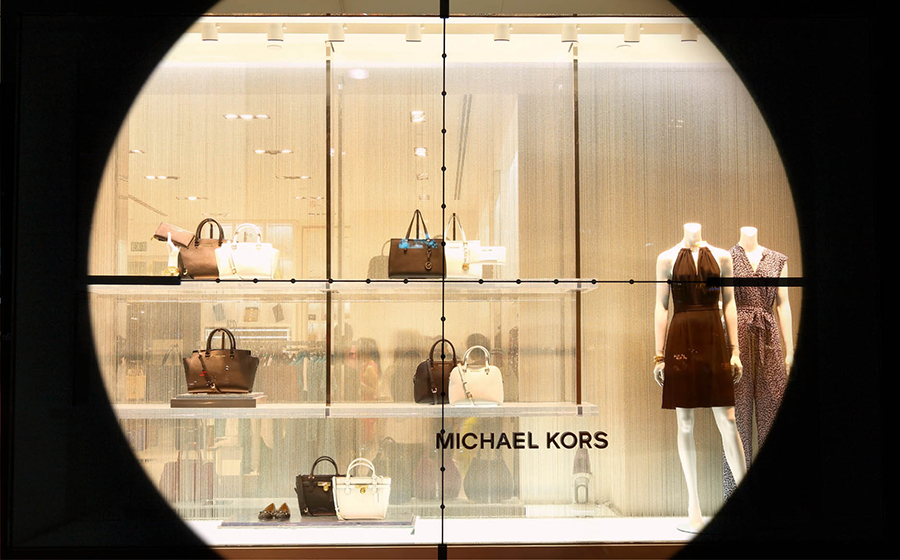It\’s a challenging market for luxury brands. Although the United States is still estimated to be the global leader in luxury goods, the luxury market is not recession proof. The growth of the off-price and secondhand retail markets put luxury brands in quite the predicament–combine this with consumers\’ growing preference for experiences over things and it\’s amazing that the luxury market is growing at all. Luxury sellers were faced with a choice. In light of the 2012 recession they went down-market by selling at off-price retailers for discounted rates, thereby running the risk of alienating their loyal customers; or to stood firm in their pricing structure, thereby losing sales and potentially failing to attract young consumers.
Few can fault luxury retailers such as Michael Kors, Coach, Ralph Lauren, for joining their lifestyle brand counterparts (J.Crew, Adidas, Free People, etc.) in creating a discounting strategy during the peak years of the off-price craze. The issue is that, as the ownership model for luxury goods is changing, consumers are once again willing to pay more for quality. Funny thing, though… once a customer gets a Coach bag at T.J. Maxx for fifty bucks, they\’re a whole lot less likely to shell out $495 for a similar bag at one of Coach\’s airport boutiques.
Can\’t Blame It on Millennials
This has been the year of comeback kids in retail. Beyond retailers like Toys R\’ Us reopening after bankruptcies with new strategies, a trifecta of impressive former luxury brands – Ralph Lauren, Coach, and Michael Kors – are quickly recouping their value perception after going down-market in response to consumer purchasing behavior after the recession. Here\’s what I really love about this: Millennials are actually leading the charge in luxury sector growth. Forbes reports that today millennials represent about 32% of spending in the personal luxury market, but by 2025 millennials are expected to make up 50% of the total market. In fact, around 130% of luxury market growth in the next seven years will be attributed to the millennial generation.
While newspaper headlines (and old-school retail analysts on LinkedIn) can\’t seem to stop throwing out accusations of millennials living in their parents\’ basements, millennial HENRYS (High Earners, Not Rich Yet) are upholding the luxury goods market. But millennials won\’t be retail\’s scapegoat much longer. If for no other reason, because Gen Z is even more frugal, and more sustainability-obsessed than the generation that came before. Perhaps instead of looking for an entire generation to blame, analysts should start looking for ways that retailers can evolve their offerings to incentivize purchasing from young Gen X, millennial, and Gen Z consumers–like those detailed in this article.
Personal Connections Outshine Brand Histories
Luxury retail used to be aloof. Stores were meant to be inviting only to the privileged few, and they were a glacial and nerve-racking experience for all other consumers. Condescending sales associates, inaccessible price points, and security guards breathing down your neck set the tone for stores like Michael Kors before the recession. Enter the age of the retail treasure hunt and \”experiences over things.\” Luxury brands now need to be accessible both in person on social media. In-store luxury consumers expect invested and engaged associates who are experts at relying the store of their brand (more on this in a moment). On social media, consumers gravitate towards luxury retailers with fast response times, diverse and inclusive models touting their wares, and blog content that shows that they speak their core demographic\’s language. Successful luxury brands still embrace their retail legacy, but nowadays luxury is defined as quality products that help consumers express their individuality, which doesn\’t happen when consumers shellac themselves in brand logos. In fact, excessive logos feel overeager to Gen Z unless the logo is expressed in a witty or subversive way (Forbes dubbed this trend \”Brandalism\”).
What about basic logo bags and sunglasses? They\’ve gone the whole trickle-down way and you can find them at TJ Maxx, Ross Stores, and on Groupon. Although whether the basic, logo-doused products seen in stores today were ever sold for full-price, or they were made with cheaper materials at off-price factories, is a matter that begs some looking into.
The Harsh Alternative to Discounting
And then there are those luxury brands that would rather set their unsold inventory ablaze then to watch it be sold to a less-than-monied customer: Chanel, Louis Vuitton, and Burberry, among others. Burberry burned $37.8 million in unsold inventory in 2017, amidst accusations of being inconsiderate toward the environment during a time of unprecedented global warming. Although Burberry may have been able to retain its value perception by committing such an act, its dubious whether next-gen consumers will see the value in this stylistic and economical elitism. As the retail industry returns to a full-price model and luxury retailers struggle to regain their splendor, there needs to be a middle ground between selling off products with off-price retailers and completely wasting perfectly usable inventory.
So, what\’s a brand to do? It\’s time that luxury retailers take a cue from their value-centric contemporaries, such as H&M, which powered the Swedish city of Vasteras when burning unwanted stock instead of letting the energy go to waste unutilized. Luxury retailers could also consider partnering with platforms such as RE/DONE and Denimcratic to upcycle unsold inventory without unnecessarily adding environmental waste.
Product Quality and Luxury Experiences Over Labels
Everyday luxury isn\’t in a label anymore. When well-known brands went down-market by cheaply manufacturing goods for off-price retailers under their same brand name (instead of creating a respectable diffusion line), brand names themselves lost much of their meaning. Take Ralph Lauren, for instance, which is in the process of rebounding after creating too strong of a brand presence at off-price department stores. The first step? Pulling inventory from the shelves of off-pricers, and Michael Kors is on a similar trajectory. Luxury implies scarcity. By pulling their brands from the shelves of off-pricers, Ralph Lauren and Michael Kors were able to regain control over their brand.
Similarly, the luxury brand experience doesn\’t just take place in-store anymore. Brands that want to be on the up-and-up can take Ralph Lauren\’s lead by strengthening their social media presence through strategic partnerships and intelligent storytelling. Francesca Nicasio suggests retailers put their company\’s origin story on paper and ensure associates know how to deliver it perfectly. This is especially important in the luxury market, as storytelling enhances consumers\’ perceived value of an item. Creativity is the key element that luxury retailers can use to ensure their brands resonate with a younger audience.
It\’s all about building up that value perception by telling customers the story of the brand or product they\’re considering–and this story shouldn\’t include seven months of wasting away on a dusty shelf at T.J. Maxx.




